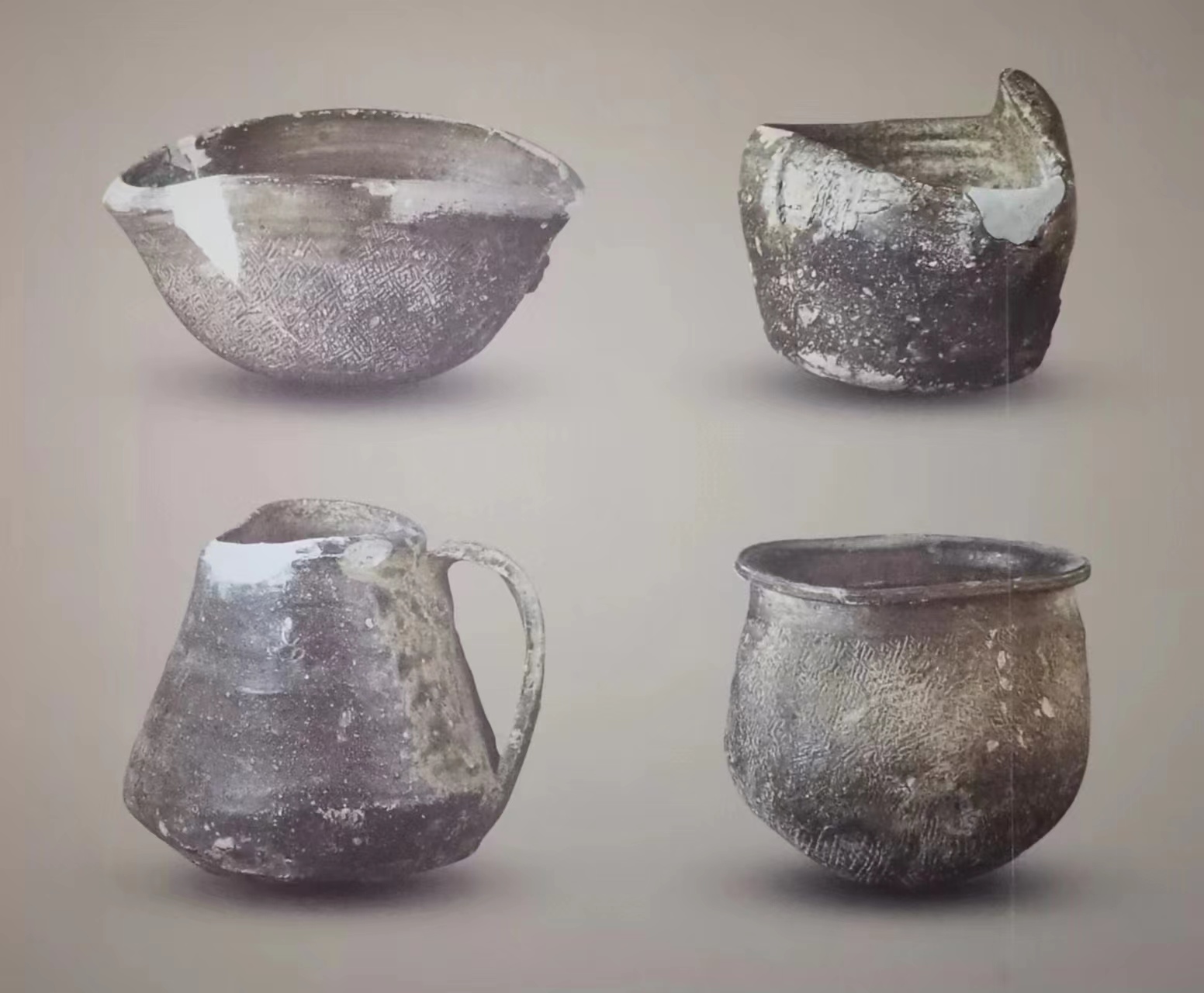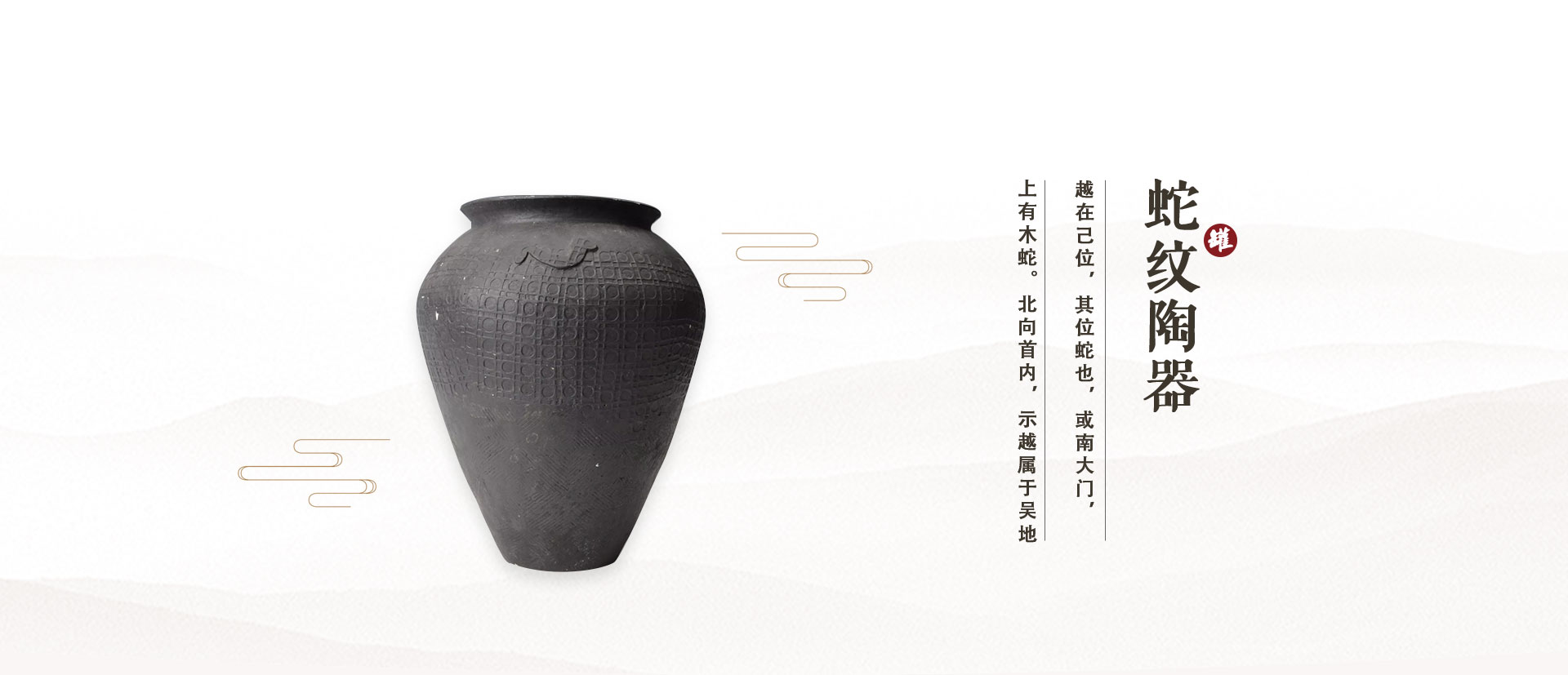角山窑址所出器物,造型奇特,种类繁多。这件陶鬶,是我国古时用于温酒的高档酒器,也被用作礼器。它造型奇特,口沿有柱,口似鸟嘴,宽身,下有三长足,整个造型如鸟站立状,说明当时古人以鸟为图腾。三足中空支撑,可置于火上使酒加热。鬶作为礼器,常与觚组合成套使用。觚就是我们俗称的酒杯,他们在一起形象的彰显着我国古老的酒文化。
The objects produced at the Jiaoshan Kiln site are peculiar in shape and of various kinds. This pottery vessel -- Gui, is a high-grade drinking vessel used for warming wine in ancient times in China, and was also used as a ceremonial vessels. It is peculiarly shaped, with a spout along the mouth, a bird's mouth-like mouth, wide body and three long legs beneath. The whole shape is like a standing bird, indicating that the ancient people took birds as totems at that time. The three legs hollow in the middle and it can be placed on the fire to heat the wine. As a ceremonial vessel, Gui is often used in sets with a Gu,which is commonly known as a wine cup, and together they are a visual representation of our ancient wine culture.
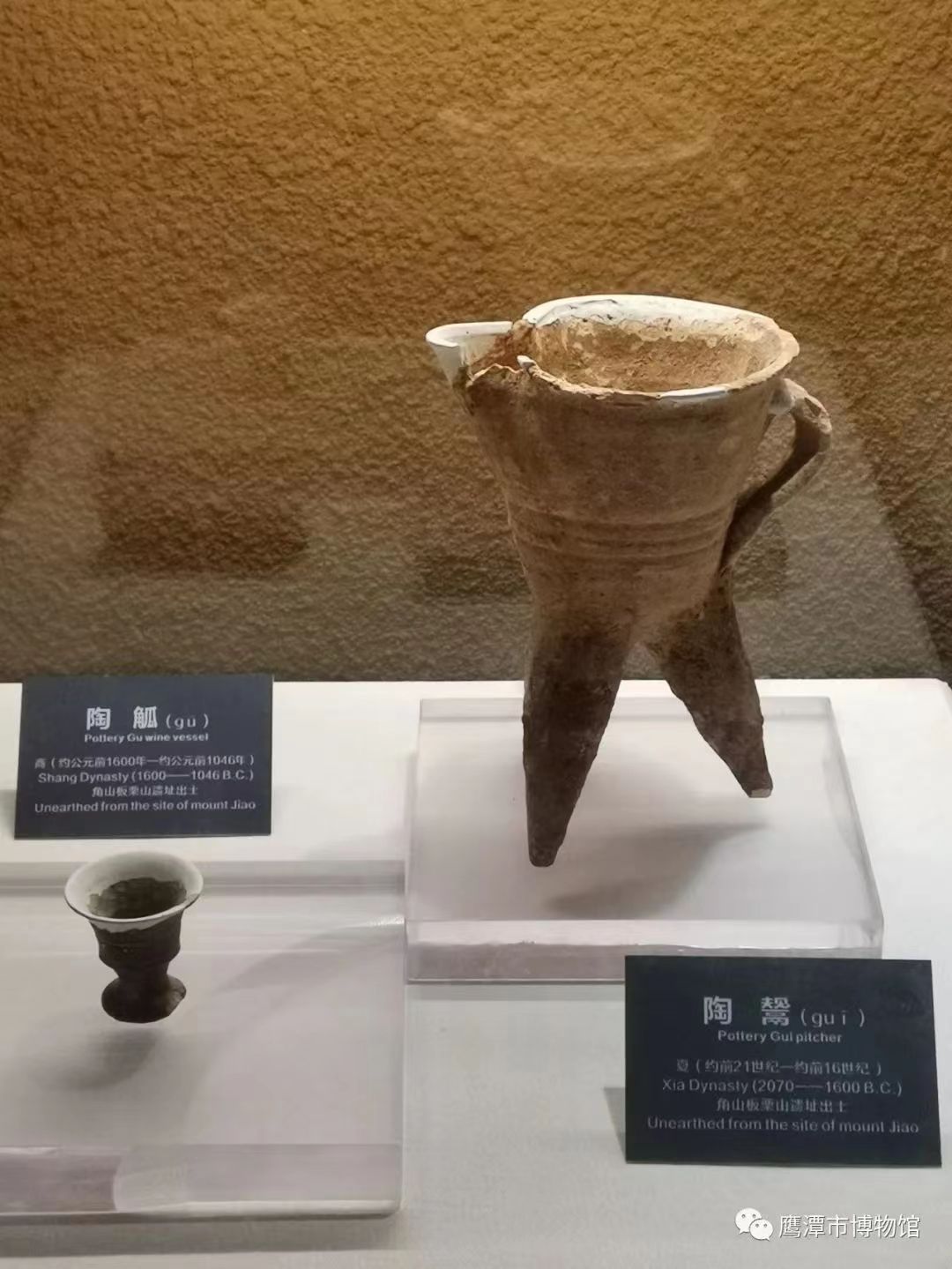
Shown here is the Pottery Jia, which is also peculiarly in shape, and used as a drinking vessel like Gu.
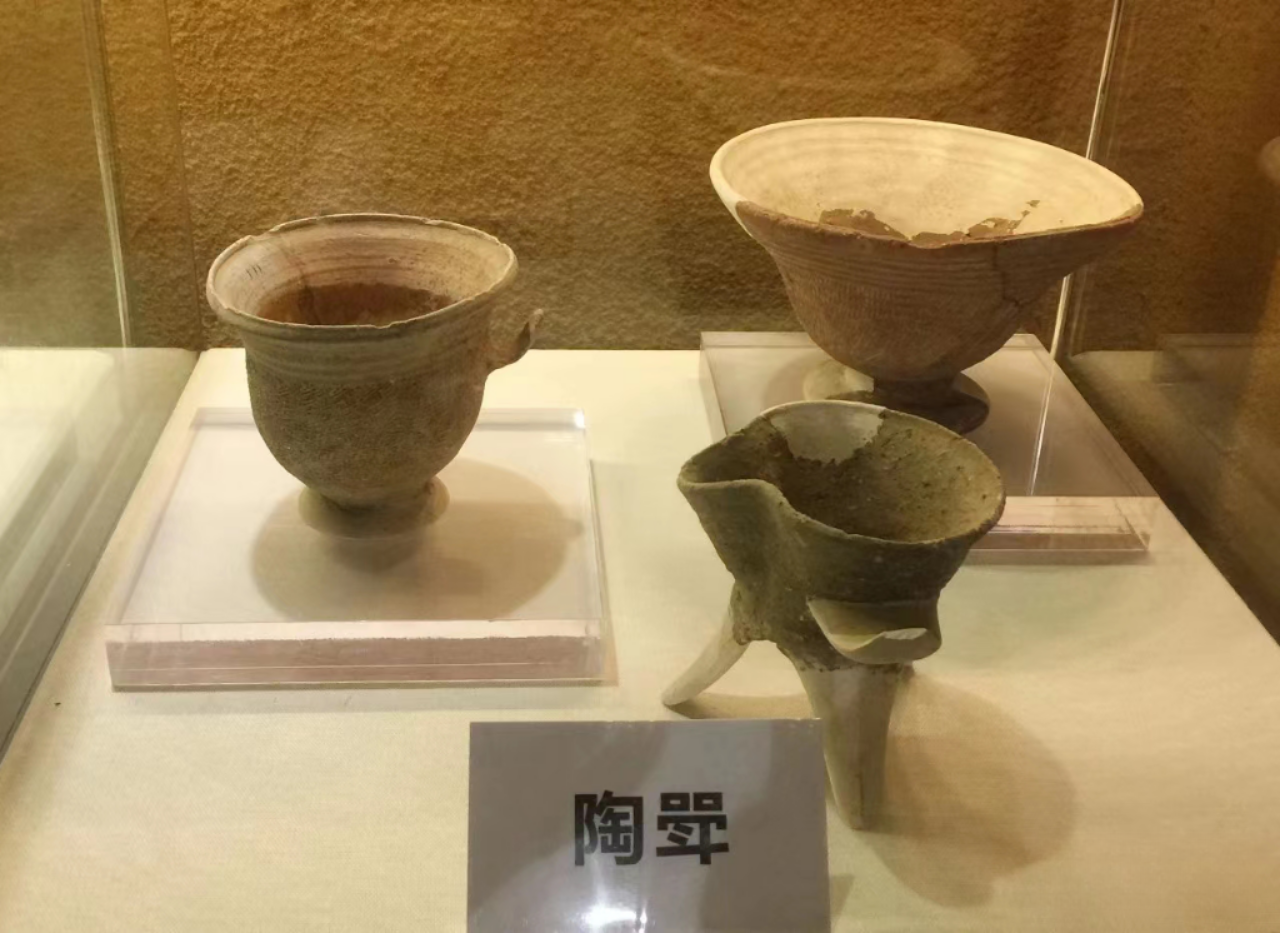
角山窑址的发掘,揭露了龙窑、马蹄形窑、圆窑、烧成坑、陈腐池等重要遗迹50余处,首次系统地再现了我国早期窑业生产从取土陈腐、炼泥、蓄泥到烧造成器、成品堆放的一系列过程。几乎集中了窑业生产各个环节,汇集了各种先进熔炉,为全方位多角度来观察和研究中国早期窑业技术提供了丰富的实物资料。
The excavation of the Jiaoshan kiln site has revealed more than 50 important remains such as dragon kilns, horseshoe-shaped kilns, round kilns, burning pits, and aging pools, which firstly systematically reproduces the processes of early kiln production in China, from clay extraction, clay refining, clay storage, pottery firing and stacking of finished products.
Jiaoshan kiln site covers every steps of the kiln industry in the pottery production and collects various kinds of kilns, providing a wealth of physical materials for observing and studying early Chinese kiln technology from a variety of perspectives.
角山窑场是中国率先同时使用龙窑、圆窑和马蹄形窑等多种窑炉烧造的窑场。角山圆窑的发掘,将中国用圆窑系统烧造原始瓷的历史向前推进了1300余年。过去认为,用圆窑烧制瓷器始于东汉时期,角山遗址发现了用圆窑系统烧制的相当成熟的原始青瓷,说明至迟在商代中期南方地区已经掌握了用圆窑烧造瓷器的技术,为瓷器的起源提供了新的宝贵资料。
Jiaoshan kiln was the first kiln in China to use multiple kilns in pottery making at the same time, including dragon kilns, round kilns and horseshoe-shaped kilns. The excavation of Jiaoshan round kiln pushed forward the history of proto-porcelain making by the round kiln in China for more than 1,300 years.In the past, it was believed that the porcelain firing in a round kiln began in the Eastern Han Dynasty, but the discovery of a fairly mature primitive celadon fired in a round kiln at Jiaoshan site indicated that the technique of porcelain firing in the round kiln had been mastered in the middle of the Shang Dynasty in southern China at the latest. This discovery provides new and valuable information on the origin of porcelain.
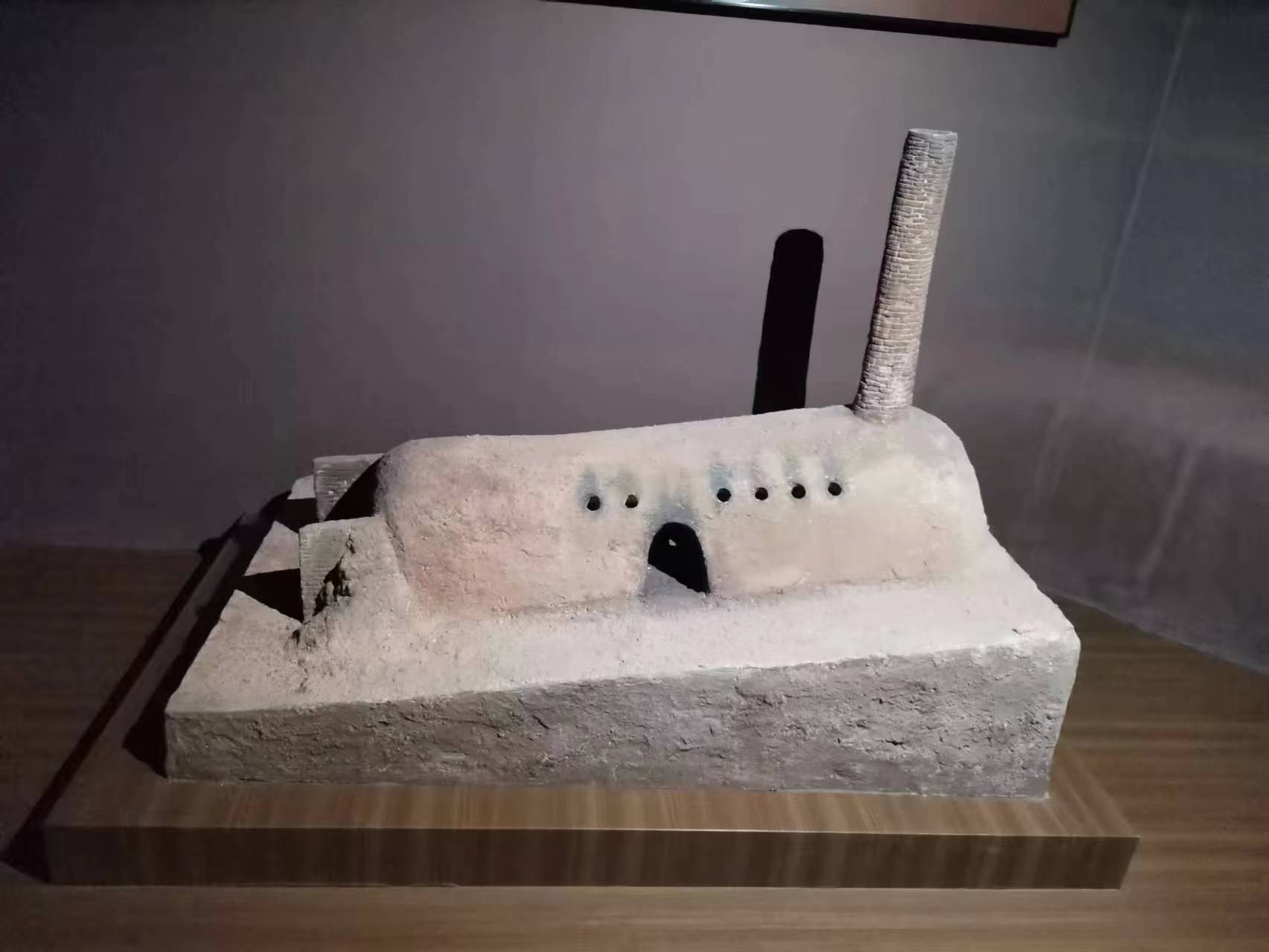

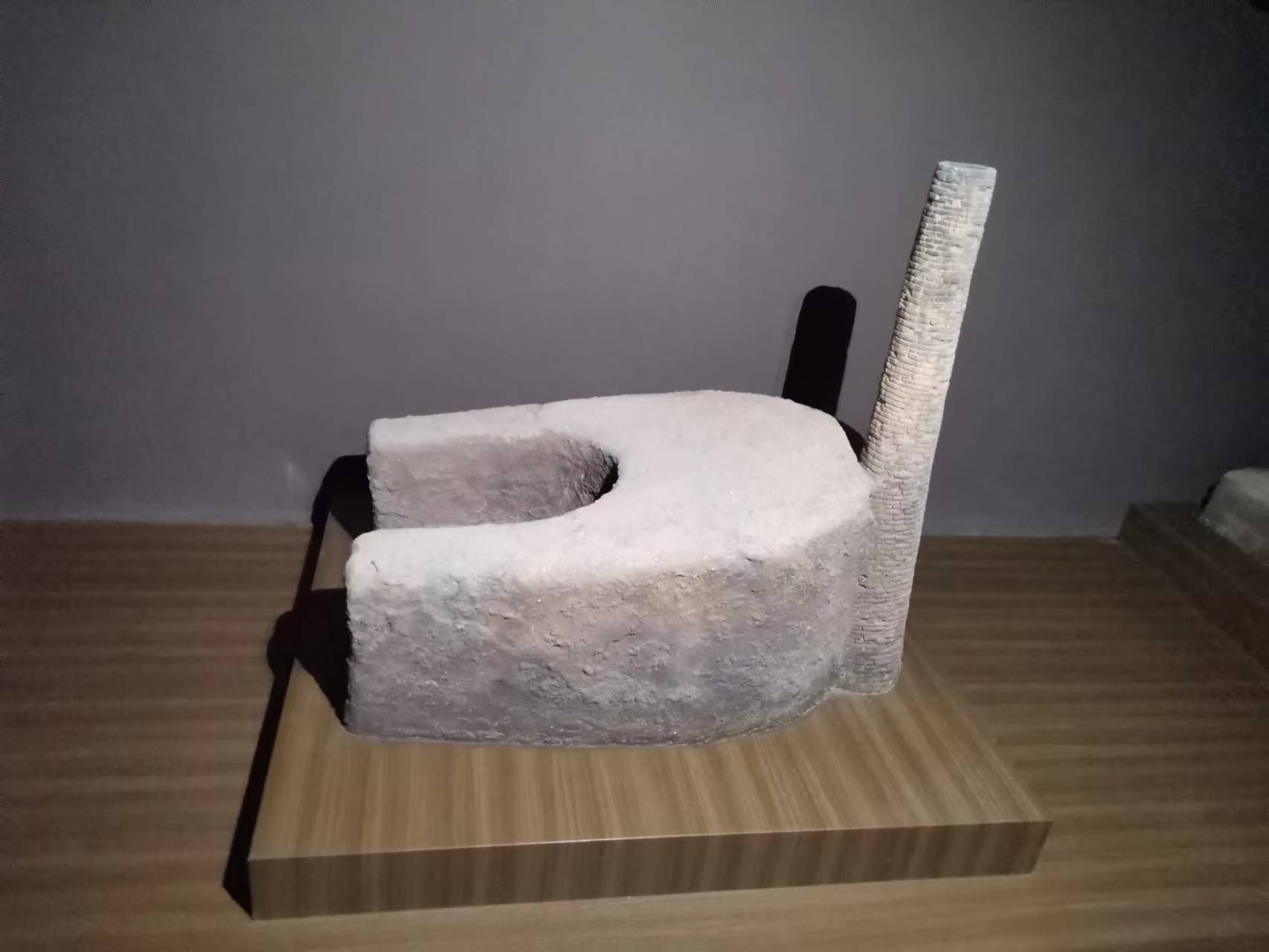
学术界根据窑业技术的发展,曾经认为龙窑系统是南方技术传统,圆窑系统为北方技术传统,两大体系是不同文化环境中的产物,代表着长江流域和黄河流域两大文明。角山遗址马蹄窑和龙窑的发现,说明至迟在商代圆窑系统与龙窑系统在江南并存,半倒焰马蹄窑与龙窑一样代表着江南地区窑业的技术文化特征,并将半倒焰马蹄窑的发生期向前推进了数百年。
According to the development of kiln industry technology, the academic circle used to consider the dragon kiln system as the southern technological tradition and the round kiln system as the northern technological tradition, and the two systems were the products of different cultural environments, which represents two major civilizations of the Yangtze and Yellow River basins.
The discovery of horseshoe-shaped kilns and dragon kilns at Jiaoshan site indicated that the round kiln and the dragon kiln coexisted in Jiangnan region during the Shang Dynasty at the latest. Same as the dragon kilns, the half-inverted-flame horseshoe-shaped kilns represented the technical and cultural characteristics of the kiln industry in Jiangnan region, it pushed forward the occurrence of the half-inverted-flame horseshoe-shaped kilns by several hundred years.
角山龙窑是目前发现最早的雏形龙窑,填补了龙窑烧造史上的一段空白,为研究龙窑的起源创造了条件。这是我们模拟的龙窑场景。角山龙窑顺坡而建,长3.15米、宽1.45米,坡度15度,因斜卧似龙而名“龙窑”。它属雏形或初级型,只有一个投柴口,烧成室与燃烧室联成一体,从窑头的燃烧室点火,利用火的自然流势贯穿窑身,最后从窑尾排出。
Jiaoshan Dragon Kiln is the earliest dragon kiln found so far, filling a blank in the history of dragon kiln and creating conditions for the study of the origin of dragon kiln. This is the scene of our simulated dragon kiln. Jiaoshan Dragon Kiln is 3.15 meters long and 1.45 meters wide, which is built along the slope with a slope of 15 degrees. It is named "Dragon Kiln" because it leans like a dragon.
It is a prototype or primary type, with only one firewood throwing mouth, and the firing chamber is integrated with the combustion chamber, which is lit from the combustion chamber at the head of the kiln, and the natural flow of fire is used to run through the kiln and finally discharged from the end of the kiln.
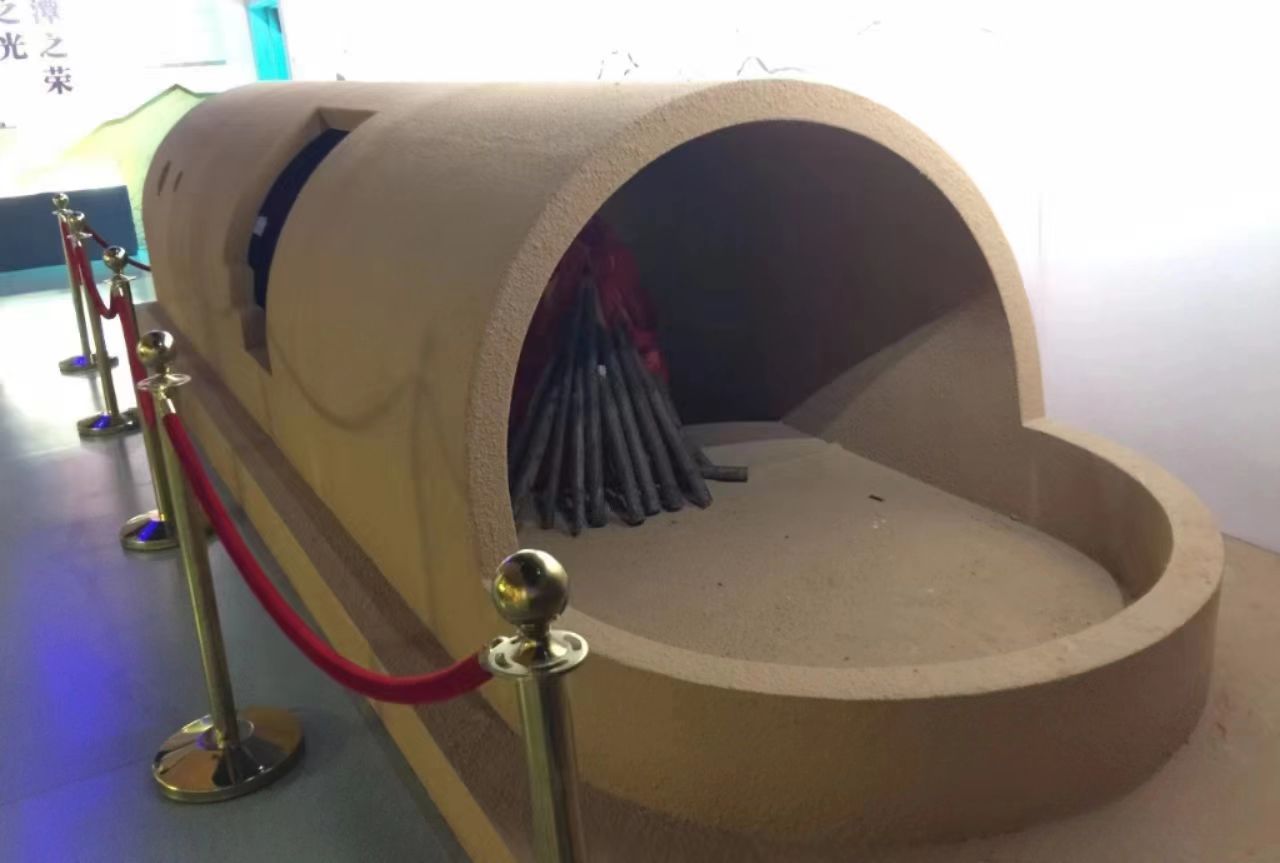
墙上的这幅画就是系统的再现了,我国早期窑业从取土陈腐到蓄泥、炼泥再到烧制成器、成品堆放最后运输贩卖的一系列过程。
The painting on the wall is a systematic reproduction of a series of processes of early kiln industry in China.
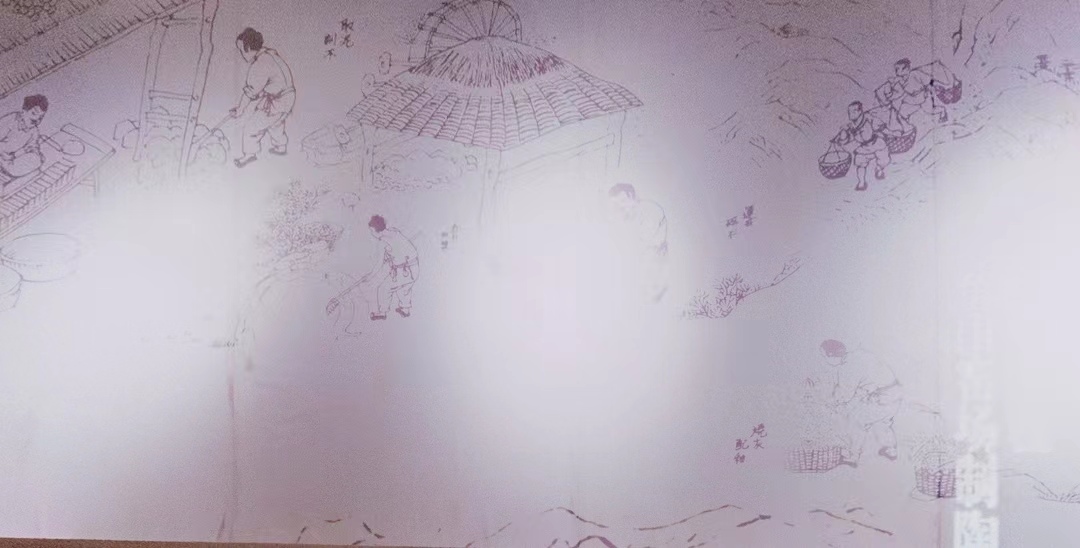
这是当时角山烧制出的原始瓷,当时陶器的烧制温度要求是800度,而原始瓷的温度要达到1000度至1200度,这证明了当时的角山窑址已经具备了烧制原始瓷的工艺。
This is the proto-porcelain fired in Jiaoshan at that time. The firing temperature required for pottery was 800 degrees, while the temperature for proto-porcelain had to reach 1,000 degrees to 1,200 degrees, which proves that Jiaoshan kiln site at that time had already possessed the techniques of making proto-porcelain.
